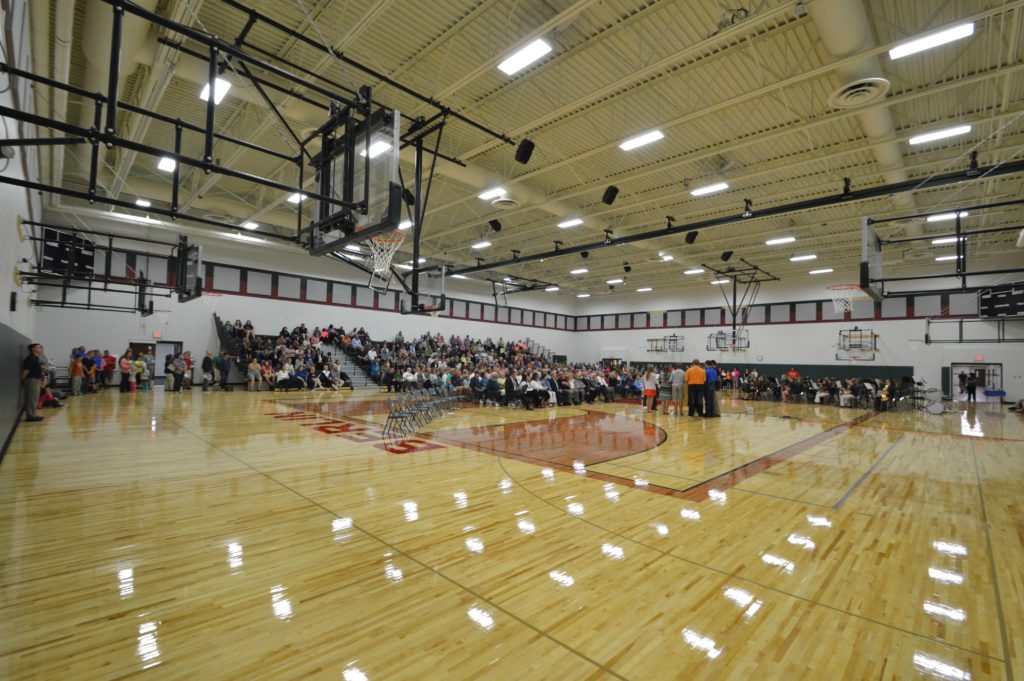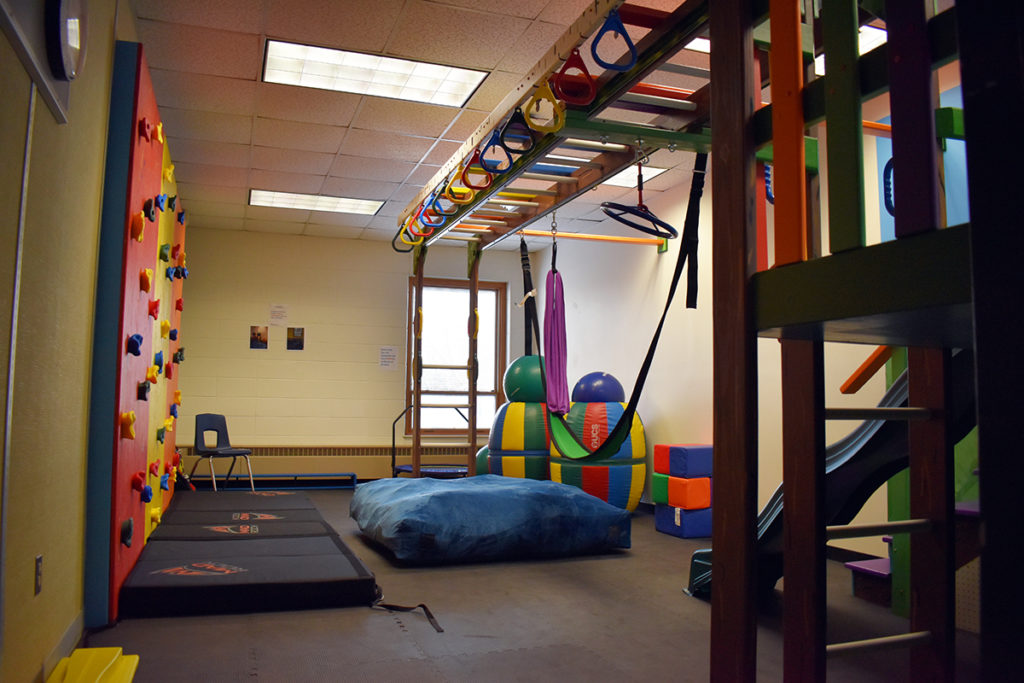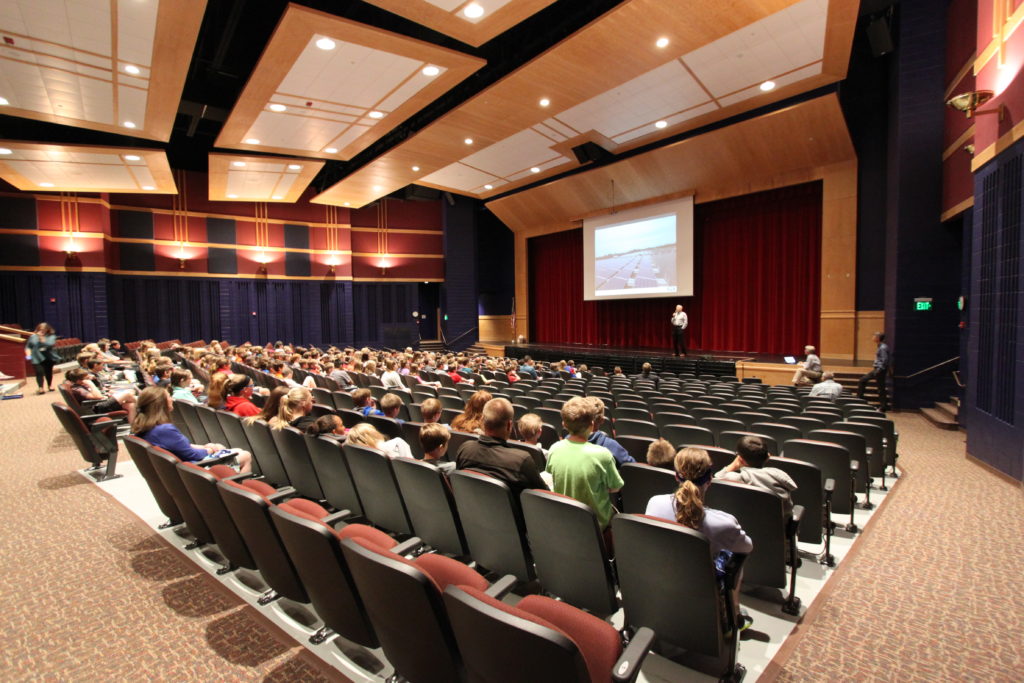In an everchanging world, we must be sure that we are making adjustments that help our students flourish and our communities thrive. Many of today’s school boards, superintendents, administrators, and principals are looking at our schools with a shift in mindset that is making a difference. These principled decisions influence both programs and facility design. Be mindful of both as you prepare for the coming school year.

MEETING STUDENTS’ BASIC NEEDS
Schools are increasingly partnering with local food banks and other non-profits to provide food for children who often go hungry over weekends and holidays but are eligible for free or reduced-price meal programs during the week. Considerate teachers and staff members identify students who demonstrate signs of hunger or malnutrition, and discreetly distribute a backpack of food for them to take home. The backpacks come filled with nutritious, easy-to-open food that does not require stove-top cooking. Empty backpacks are returned by the students and refilled for the following weekend.
Similarly, many schools are now offering pantries and “clothes closets” on the school property to provide apparel and toiletries for students. This gives children direct and discreet access to what they need without their parents having to figure out the finances, transportation, and timing related to making necessary purchases.
Providing access to these donated items has been shown to reduce bullying and social stigma that are connected to the visible signs of poverty and to boost students’ self-esteem.
Providing access to these donated items has been shown to reduce bullying and social stigma that are connected to the visible signs of poverty and to boost students’ self-esteem. Programs like these also reduce absenteeism and allow students to focus more intently on their education. But physical needs are not the only challenges that today’s students face.

PROVIDING SPACE FOR MENTAL HEALTH
More and more students struggle with mental health issues, often related to depression, anxiety, and fear. Our schools should be prepared to provide a safe space to address these issues when they arise. Students affected by trauma or who have persistent physical and emotional challenges can benefit from a space that is respectful of their circumstances and supports their educational pursuits.
The CDC, Center for Disease Control and Prevention, offers a sense of the scope of this growing issue in an April 2019 Children’s Mental Health Update. The following show some of their findings:
- 7.4% of children aged 3-17 years (approximately 4.5 million) have a diagnosed behavior problem.
- 7.1% of children aged 3-17 years (approximately 4.4 million) have diagnosed anxiety.
- 3.2% of children aged 3-17 years (approximately 1.9 million) have diagnosed depression.
- About 3 in 4 children aged 3-17 years with depression also have anxiety (73.8%) and almost 1 in 2 have behavior problems (47.2%).
The CDC data above should be considered when designing new educational facilities or remodeling existing spaces, purchasing items such as paint and furniture, and selecting professional development and faculty/staff education. Should our schools be designed for mental health? The Appleton Area School District (AASD) in Wisconsin believes so. AASD has given attention to the growing issues of mental health and provided self-regulation spaces for several years.
The primary goal of a dedicated self-regulation space is to either keep a student engaged in education or keep them close enough to be able to relate to what is happening in the classroom using a leveled approach. Level 1 is to self-regulate and maintain a presence in the learning process. Level 2 is self-regulation in the Nest but staying within the classroom. At Level 3, the student is removed from the classroom.
At AASD, the Nest is a regulation station within the classroom that is a designated space, area, enclosure, or tent to encourage a sense of calmness. It provides space for de-escalation before a negative incidence occurs. Statistics back the success of these spaces, with fewer incidents where students are separated and thus absent from valuable education time. Historically, it was common for situations to escalate to the point where a student was removed or placed in timeout in a punitive way. Now, a student or teacher can identify signals, and make a preventative modification to the Nest. The student is still receiving instructions and being supervised by the classroom teacher, but within a personal space.
However, students’ needs are not the only shifts that are present.

SCHOOLS AS THE COMMUNITY CENTER
Certainly, schools are and should be focused on students. But, in many regions the needs of the community are great, and schools do and can meet those needs. Schools are frequently the cornerstone of a community, bringing people together and providing opportunities for culture, entertainment, and further education. Sports and the arts provide a strong connection point in many districts, as athletics and performing arts offer a common bond among various demographics and are consistent social events.
Schools are frequently the cornerstone of a community, bringing people together and providing opportunities for culture, entertainment, and further education.
In addition to these types of events, opening campuses for civic uses, especially in areas that may not have suitable commercial facilities, connects the school to area residents whether they have students or not. Theaters, libraries, gymnasiums, athletic fields, cafeterias, computer labs, and technical education shops are all incredible resources for an entire community. Instances of non educational uses of facilities include fundraisers, summer camps, athletic competitions, trade shows, and community theater.
Through access to technology, low or no-fee meeting space, and GED or career training courses, school libraries can be a beacon of hope for the area. If feasible with your building configuration, design a way to provide a separate, secure entrance for after-hours use so the entire school does not need to be opened. Holding adult education classes like driver’s education, technology courses for senior citizens, and ESL (English as a Second Language) courses can help disadvantaged community members, and more. In addition to providing a great community service, this can have a positive impact on relations between the school and community and how the school is perceived.
And those are not the only ways we can have a great impact on our communities.
A UNIQUE PIPELINE FOR TOMORROW’S EMPLOYEES
It is essential for school districts to look intently at the regional landscape, being certain that the options and opportunities available to students match the needs of the workforce. Educational leaders must contemplate additional tactics for learning, based on technology, new research regarding solid pedagogy, and a collaborative and project-based approach to education.
As well, districts must be mindful of what aspects are present or changing in their geographic community. If civic and business leaders have focused on attracting a specific type of industry, is the school curriculum aligned to match those needs? Is a business sector quickly rising in the area? Are there distinct skillsets deficient in the region?
When Clintonville Public School District in Wisconsin was considering a referendum to improve their career and technology education spaces, the District held a breakfast with school leaders and local industry leaders to discuss how they could work together, pool their resources, and collaboratively offer better education and training for their community.
Another fine example can be found in Darlington, Wisconsin. Darlington is in rural Lafayette County in southwest Wisconsin and serves approximately 800 students. Darlington’s business community has touted their food related business opportunities, because they are situated in one of Wisconsin’s most prolific agricultural areas. In addition, an emphasis on nature-based tourism, recreation, and learning opportunities are present due to the proximity to the Pecatonica River, Yellowstone Lake State Park, and area trails. Considering the regional resources, numerous educational tracts are made to prepare students for jobs in these industries. The school facilities are properly designed to accommodate these specific tracts and provide a pipeline of prepared students for transition to the next generation of an innovative workforce.
ALERT AND NIMBLE
Recognizing the changing needs of our students and our communities, and fostering a culture where teachers, staff, and administration can proactively create solutions is vital to thriving students and communities. Look for ways to design your facilities and programs to provide foundations for success.

